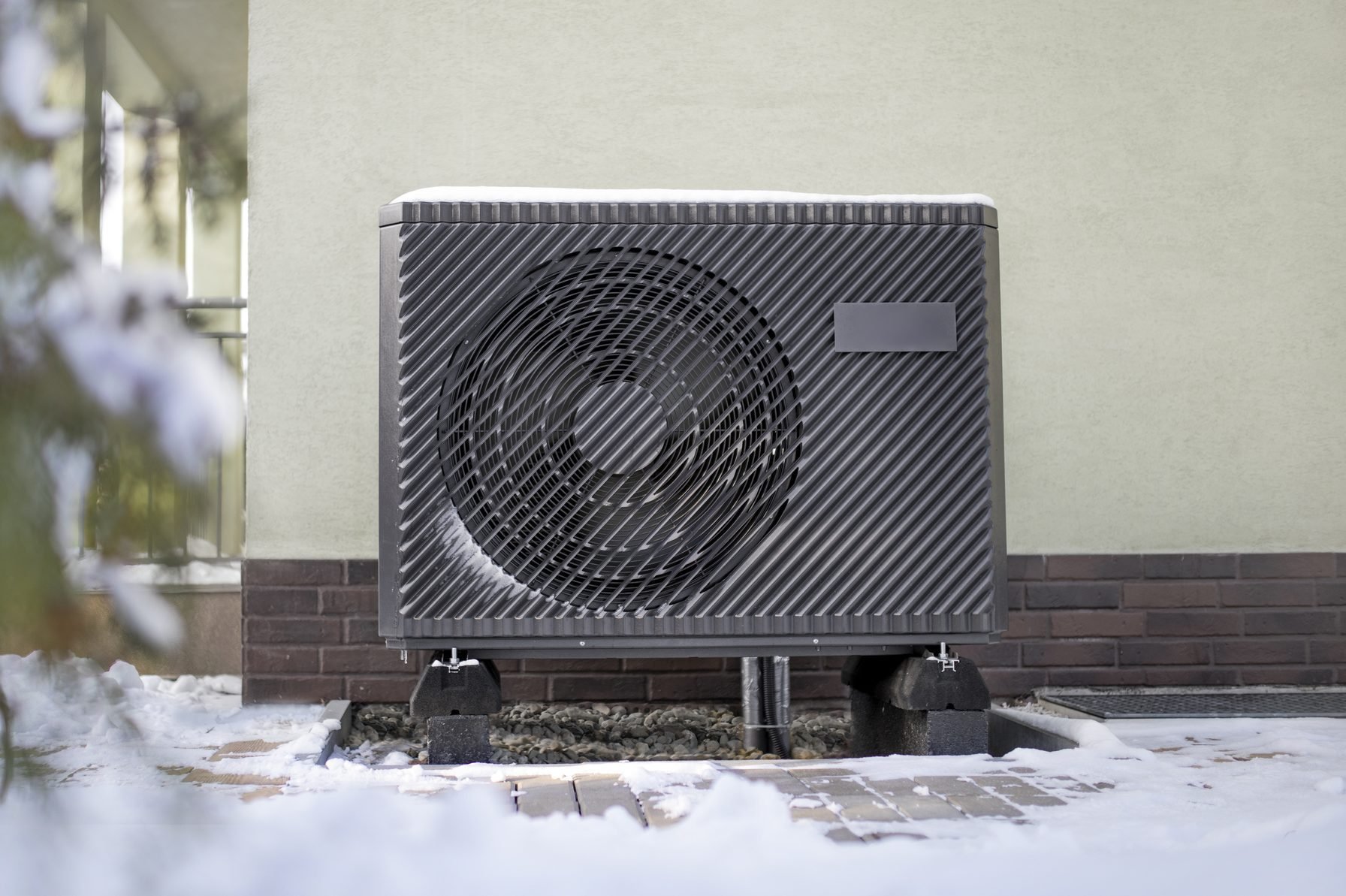In cold climates, homes with heat pumps often have an emergency heat setting on the thermostat. If the pump fails, EM heat can take over.

What Is the Emergency Heat Setting?

Heat pumps work more efficiently than furnaces, but they don’t actually produce heat. Instead, they transfer heat from outdoors to indoors via a refrigeration system similar to that in an air conditioner or refrigerator.
A heat pump draws about 3,000 watts of electrical power compared to 10,000 watts or more for an electric furnace, which is why the federal government provides subsidies for new heat pump installations.
However, heat pump performance suffers in cold weather, when there isn’t as much warmth in the surrounding air. In cold climates, heat pumps usually come with auxiliary heaters, i.e. resistive heating strips or elements that automatically turn on when the room temperature remains consistently lower than the thermostat setting.
Many homeowners aren’t aware the auxiliary heat has switched on until they get their monthly electricity bill. Because resistive heat consumes more electricity than a heat pump compressor, the bill is higher than normal.
If you have a new heat pump, you might also be unaware of another backup function called emergency heat (aka EM heat). This is different from auxiliary heat, and it’s critical in case the heat pump stops working or the coils ice over. In cold weather, the likelihood of that happening is higher than you might think.
On This Page
What Is Emergency Heat?
Not all heat pumps come with emergency heat. You find it more in northern climates.
A heat pump with emergency heat features a backup system. This usually consists of electric heating elements but also can be powered by natural gas or oil. Unlike auxiliary heat, emergency heat must be turned on and off manually. A setting on the thermostat, usually labeled E or EM, lets you to do this.
As the name suggests, emergency heat mode is for emergencies only. It’s not a comfort setting, although in extremely cold weather you may be forced to use it that way.
When you experience a problem with the heat pump, EM heat provides the warmth you need to stay comfortable while you fix the issue. A furnace, even one burning gas or oil, consumes more fuel than a heat pump, so you don’t want to keep your system in emergency heat mode longer than you have to.
What Does the Emergency Heat Setting Do?
When you manually select EM heat, the heat pump compressor shuts down and the backup system takes over. The blower in the air handler keeps working normally with heat generated from an electric heating element or a gas or oil burner, not heat transferred from outdoors. So your heating system becomes a furnace.
Your system will stay in EM heat mode until you manually switch it off. When that happens, the furnace shuts down, the heat pump compressor starts up and the condenser coils resume supplying heat to the air handler.
When To Use Emergency Heat
The cost of emergency heat is dramatically higher than normal. If you’re spending a little more than $30 a week to run your heat pump, your weekly energy costs on EM heat could rise to as much as $200.
Besides that, the backup system isn’t a full-fledged furnace. Using it for an extended period puts a strain on it that could significantly reduce its service life. Keeping this in mind, here are some circumstances where you might use the emergency heat setting:
- The coils ice over: When the heat pump is engaged, the outdoor coils get cold and force moisture from the air to condense. When the temperature is cold, the condensate can turn to ice. Ice prevents the coil from absorbing heat, so the house may always feel cold. The emergency heat mode keeps the house warm while you de-ice the coil with hot water, a hair dryer or some other safe, sure method.
- Damage to the heat pump: During a storm, a tree branch could fall and damage the outdoor unit. Use emergency heat to stay warm while you have the unit repaired. Similarly, if something else goes wrong with the system (perhaps the compressor fails), emergency heat will keep you warm until the HVAC technician arrives.
- Extremely cold weather: In really cold temperatures, the heat pump may not keep the house warm, even with auxiliary heat. Use emergency heat until the cold snap is over.




















